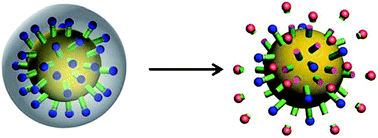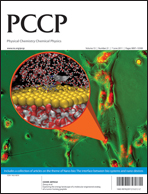The design and application of fluorophore–gold nanoparticle activatable probes
Abstract
Fluorescence-based assays and detection techniques are among the most highly sensitive and popular biological tests for researchers. To match the needs of research and the clinic, detection limits and specificities need to improve, however. One mechanism is to decrease non-specific background signals, which is most efficiently done by increasing fluorescence quenching abilities. Reports in the literature of theoretical and experimental work have shown that metallic gold surfaces and

- This article is part of the themed collection: Nano-bio: The interface between bio-systems and nano-devices

 Please wait while we load your content...
Please wait while we load your content...